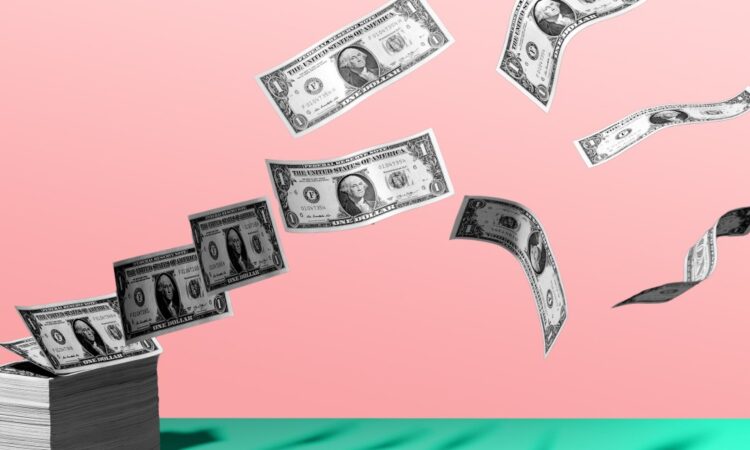The Fed left rates unchanged but plans to cut later this year. Here’s what it means for your money.

After the pandemic, inflation skyrocketed. In response, the Federal Reserve started increasing interest rates to cool the pace of rising prices, hiking its benchmark rate 11 times. Now that inflation has slowed—from more than 9% to 3.4%—the Fed expects to hold rates steady before cutting them in 2024.
After the Fed meeting in January, investors are expecting a rate cut in May, instead of March as originally anticipated.
“There is more data that will come in before March: Two CPI reports and macro data. I do expect that they incrementally shift the Fed in a more dovish direction,” says Preston Caldwell, chief U.S. economist at Morningstar. “I’ve backed away from my view that they’ll cut in March and think it’s more likely they’ll do the first cut in May.
4 money moves you should make now that rates are high
The Fed’s rate hikes influence the rates that banks set on consumer products like high-yield savings accounts, certificates of deposit (CDs), and credit cards.
“A higher federal funds rate means banks’ borrowing costs are greater,” says Dan Tolomay, chief investment officer of Trust Company of the South. “This gets passed on to consumers in the form of higher interest rates on things like auto loans and mortgages.”
If you’re wondering how you should navigate your finances now that rates are well above 5% (the target range for the federal funds rate is between 5.25% and 5.50%), up from close to zero during the pandemic, consider the following strategies.
Pay down your high-interest debt
High-interest debt can prevent you from reaching your financial goals. With interest rates at a more than 20-year high, the cost of holding credit card debt has become increasingly expensive. In Q3 2023, the average APR was 22.77% for all credit card accounts with assessed interest.
Make a plan to reduce or eliminate your debt, especially high-interest debt. With the avalanche method, borrowers attack high-interest debt first. If however, you prefer small wins to keep the momentum going until you’ve paid off all yourdebt, try the snowball method. The best strategy for you will depend on what you can stick to long term.
Shop for a new savings account
Higher interest rates aren’t always bad news, especially for savers. The annual percentage yield (APY) on your savings account will likely increase alongside the federal funds rate. If you’re shopping for a new account to park your savings in, a higher APY can help your balance grow even faster.
The most recent rates from the Federal Deposit Insurance Corporation (FDIC) put the national savings APY average at 0.476%, although banks set their own rates, and you can likely secure a much higher APY by shopping around.
Avoid making any sudden investing moves
Any time rates change or the market anticipates these changes, you could see positive and negative stock market swings. Higher interest rates tend to negatively affect earnings and stock prices, and investors might be tempted to panic-sell as a result. Higher rates can imply higher borrowing costs for companies, which can impact company earnings and make investors less optimistic about a company’s profits.
If you’re investing for a goal that is still years down the line, you may want to ride out any short-term market bumpiness. Timing the market is a risky move, and panic-selling could work against you by incurring even greater losses once that stock bounces back.
Work on boosting your credit score
Lenders rely heavily on your credit score and the information contained in your credit report to determine whether or not they want to give you the financing you need for bigger purchases like your home or car. Similar to savings accounts, scoping out the different financing rates available to you can also help you save if a major purchase is on the horizon, and a higher credit score could mean more favorable terms.
Take stock of your credit score and the information in your credit report that could be helping or hurting your score, and make a plan to improve it if it’s not quite where you want it to be.
Some of the key ways to improve your score include:
- Paying bills, debt, and other monthly payments on time.
- Keep a low credit utilization ratio—that’s the number you get when you divide your balances by your credit limits. Most experts suggest keeping this to 30% or less.
- Be selective about new credit applications. Too many new applications in a short amount of time can hurt your score.
Make it a habit to regularly review your credit report for errors. False or inaccurate information can drag down your score significantly. Catching an error early on and disputing it with the credit bureaus immediately can ensure that it’s dealt with and removed from your report in a timely manner.
The takeaway
If the federal funds rate declines later this year, rates on everything from credit card APRs to mortgages will follow. While this is good news for those carrying credit card debt or shopping around for a home, it could mean bad news for savers stashing cash in bank accounts.
Regardless of what the Fed does, try and focus on what you can control when it comes to your finances–consider shopping around for the best rates on savings accounts, improving your credit score, and sticking with your long-term investment plan.





